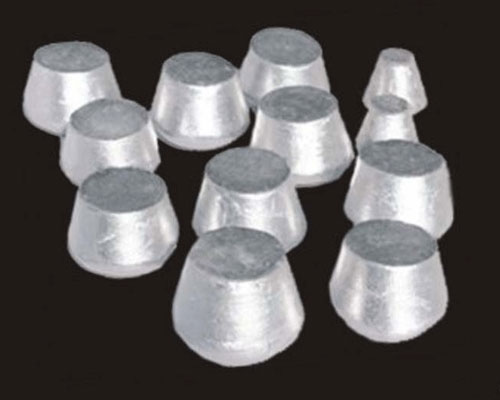The aluminum alloy modification process factors are: modification temperature, modification time, modification agent type, and dosage.
Metamorphic Temperature
Higher temperature is beneficial to the Aluminum Alloy Modification Process, the recovery rate of sodium is high, the modification rate is fast, and the effect is good. But the metamorphic temperature should not be too high, too high will drastically increase the oxidation and gettering of the aluminum liquid, and increase the iron impurities in the aluminum liquid, reducing the service life of the crucible. In general, the metamorphic temperature should be selected slightly higher than the pouring temperature. This avoids the metamorphic temperature being too high, can reduce the time for adjusting the temperature after the metamorphism, and is beneficial to improve the metamorphic effect and the metallurgical quality of the molten aluminum.
Deterioration Time
The higher the modification temperature and the better the contact condition between the aluminum liquid and the modification agent, the shorter the modification time of Aluminum Alloy Modification Process required. The deterioration time should be determined on the basis of experiments according to specific conditions. If the modification time is too short, the modification reaction will be incomplete; if the modification time is too long, it will increase the burning loss of the modification agent and increase the inhalation and oxidation of the alloy.
The modification time consists of two parts: the modification agent coverage time is generally 10 to 15 minutes, and the pressing time is generally 2 to 3 minutes.

Modifier Type and Dosage
The type and amount of modifier should be selected according to the type of alloy, casting process, and specific requirements for the control of the structure. Choosing a non-toxic, non-polluting, and long-lasting modification effect is the current development direction of aluminum alloy smelting technology.
In production practice, it should be considered that the reaction of the modifier may be incomplete, so the amount of modifier should not be too small, otherwise the modification effect is not good. However, the amount of modifier should not be too much, too much will cause over-deterioration. Therefore, the amount of modifier used is generally specified as 1% to 3% of the weight of the charge. In production, usually adding 2% can ensure a good deterioration effect. For metal castings, the amount of modifier can be reduced appropriately. When using a universal modifier, in addition to considering the modification effect, the requirements for coverage and refining ability of this modifier should also be considered. Generally, the dosage of the modifier is 2% to 3% of the weight of the aluminum liquid.
Pre-furnace Inspection of Metamorphism Treatment
Pouring the sample, knocking it off after cooling, and judging the deterioration effect according to the shape of the fracture. If the deterioration is insufficient, the grains are coarse, the fracture is gray and dark, and shiny silicon grains are visible. If the deterioration is normal, the grains are fine, the fracture is white velvet, and there is no bright spot of silicon grains. If the metamorphism is excessive, the crystal grains will be coarse, and the fracture will appear blue-gray, with bright crystal spots of silicon.

